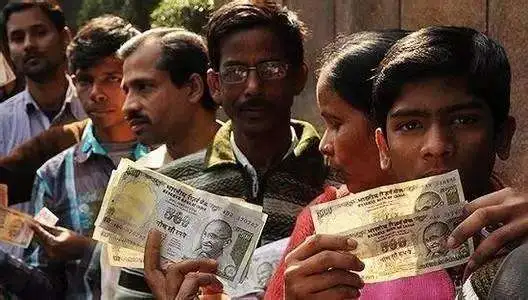简体中文
繁體中文
English
Pусский
日本語
ภาษาไทย
Tiếng Việt
Bahasa Indonesia
Español
हिन्दी
Filippiiniläinen
Français
Deutsch
Português
Türkçe
한국어
العربية
IMF Says India Has Limited Room For Fiscal Stimulus, Urges Debt Reduction
Abstract:The International Monetary Fund said India has limited room for fiscal stimulus and stressed the need for fiscal consolidation as it has one of the highest debt among the emerging markets.
The International Monetary Fund said India has limited room for fiscal stimulus and stressed the need for fiscal consolidation as it has one of the highest debt among the emerging markets.

The IMF staff estimated that India's public sector needs to borrow the amount equivalent to around 8.5 percent of GDP in order to pay for the services it provides.
“Economic development projects and enhanced social initiatives in India will be vital in the coming year,” the IMF said in a statement accompanying the Article IV report. But to generate the funds to get them off the ground, public debt must be reduced, the lender noted.
The general government debt has risen to a three-year high of 68.1 percent of GDP in the fiscal 2019. Measures are now required to reduce the same to 60 percent of GDP, the lender added.
Although India has been among the fastest growing economies in the world in recent years, it is now in the midst of a significant economic slowdown, Ranil Salgado, IMF Assistant Director, Asia Pacific Department, said.
India's growth projections are likely to be revised down in the January update of the World Economic Outlook.
The International Monetary Fund said India has limited room for fiscal stimulus and stressed the need for fiscal consolidation as it has one of the highest debt among the emerging markets.
The IMF staff estimated that India's public sector needs to borrow the amount equivalent to around 8.5 percent of GDP in order to pay for the services it provides.
“Economic development projects and enhanced social initiatives in India will be vital in the coming year,” the IMF said in a statement accompanying the Article IV report. But to generate the funds to get them off the ground, public debt must be reduced, the lender noted.
The general government debt has risen to a three-year high of 68.1 percent of GDP in the fiscal 2019. Measures are now required to reduce the same to 60 percent of GDP, the lender added.
Although India has been among the fastest growing economies in the world in recent years, it is now in the midst of a significant economic slowdown, Ranil Salgado, IMF Assistant Director, Asia Pacific Department, said.
India's growth projections are likely to be revised down in the January update of the World Economic Outlook.
IMF Chief Economist Gita Gopinath last week said India's growth projections are likely to see significant downward revision. The lender currently forecasts 6.1 percent growth for this year and 7 percent for 2020.
To address the current downturn and to return India to a high growth path requires urgent policy actions, said Salgado. The near-term policy mix needs to be mindful of supporting economic activity and restoring confidence,the official stressed.
Further, in the medium-term, realizing India's substantial growth potential depends critically on the implementation of growth-enhancing structural reforms, Salgado added.
The IMF sees room for further monetary policy easing, if the economic slowdown continues. The lender said easing bias should be maintained at least until the projected recovery takes hold.Disclaimer:
The views in this article only represent the author's personal views, and do not constitute investment advice on this platform. This platform does not guarantee the accuracy, completeness and timeliness of the information in the article, and will not be liable for any loss caused by the use of or reliance on the information in the article.
WikiFX Broker
Latest News
PH SEC Issues Crypto Guidelines for Crypto-Asset Service Providers
FTX Chapter 11 Restructuring Plan Activated: $16 Billion to Be Distributed
Think Before You Click: Malaysian Loses RM240,000 to Investment Scam
Share Industry Insights and Discuss Forex Market Trends
Top 9 Financial Fraud Cases in Recent History
KuCoin Pay Introduces Easy Crypto Payments for Merchants
Malaysian Man Killed in Alleged Forex Dispute-Related Attack
How Big is the Impact of the USD-JPY Rate Gap on the Yen?
What Euro Investors Can't Afford to Miss
Is OneRoyal the Right Broker for You?
Currency Calculator






